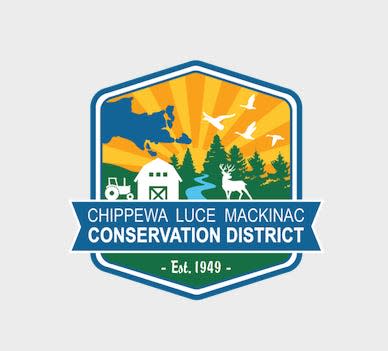Conservation district: Planning for the future includes planning for our conservation future

We hear a lot of talk in our lives about planning for the future. Much of that talk starts in our youth as we start to invest in our adult lives. Once we reach adulthood the conversation becomes very financial oriented as we begin to save money for retirement, save for purchasing a house, save for having children, save for vacations and save for everyday life. As overwhelming as financial planning can be, we also are planning for many other things in our lives.
One of those important planning measures to consider if you are a landowner is conservation planning. Conservation planning can be a huge undertaking and lengthy process but help is available. The Chippewa Luce Mackinac Conservation District (CLMCD) is your local resource to help you with your conservation needs and to help you plan for your conservation future.
We all know that our climate is changing and our weather changes from year to year. Just two years ago we had such high-water levels in the Great Lakes that people were losing many feet of shoreline and in some cases entire homes. Now, we are beginning to see those water levels go down or at least stabilize. In the Upper Peninsula, some years we have very little rain, some years we have more than we need. These changes can’t be predicted, but they can be planned for and safeguarded against using conservation practices, much like we can plan for and safeguard our lives with financial planning.

Proper conservation planning all begins with the landowner determining what they want and need for their property. CLMCD can then help you come up with a plan to meet those goals with the newest and best conservation practices available. In a lot of cases, the CLMCD can also help landowners find financial assistance with their conservation planning needs. Although conservation planning seems daunting and time-consuming the payoff can be incredible for your land and land quality, not to mention work completed on your land affects the rest of the community around you in many ways including the increased wildlife use, better water quality, and decreased risk of disease just to name a few. Conservation planning and implementation also prepares you for climate change concerns such as unpredictable weather or high-water levels.
CLMCD prepares for as much as we can so we can help landowners with their conservation needs, but we rely on our local community to tell us what their conservation priorities are through a 5-year Conservation Needs Assessment or Resource Assessment. This assessment allows CLMCD to plan for programs, projects, and educational material for the next 5 years so we can help landowners as best we can. The CLMCD is currently collecting our area's conservation needs using an online survey. The survey can be found at clmcd.org right on the home page. We are keeping the survey open for just a few weeks more so we can have a wider array of opinions from across the district. We are looking for more survey results from our forest landowners and our recreational landowners, but are glad to accept surveys from anyone who is willing.
If you are in need of some help with your land and how to meet your conservation priorities or goals, please get in touch with the CLMCD and we would be happy to help. CLMCD can be contacted by phone at 906-635-1278 or by email at clmcd@macd.org. Additionally, if you have any questions about our Conservation Needs Assessment or need a hard copy to complete, please contact Mike McCarthy at the CLMCD for assistance.
— Mike McCarthy is executive director of the Chippewa Luce Mackinac Conservation District.
This article originally appeared on The Sault News: Conservation district: Planning for the future includes planning for our conservation future
